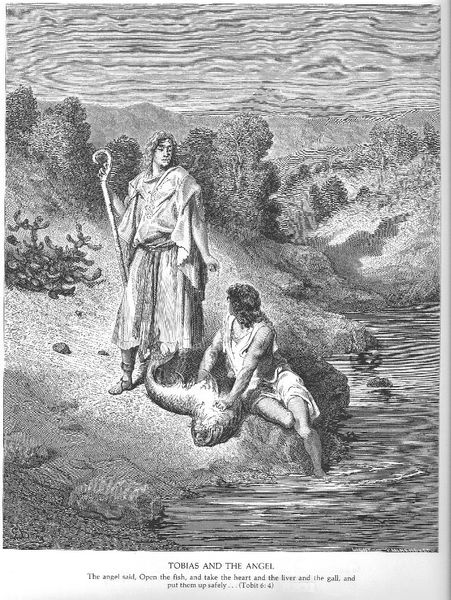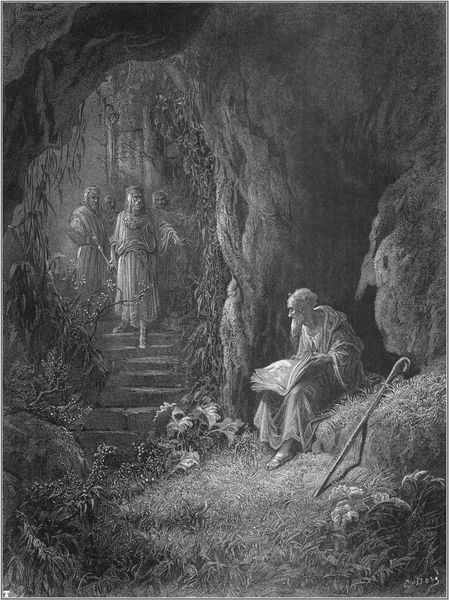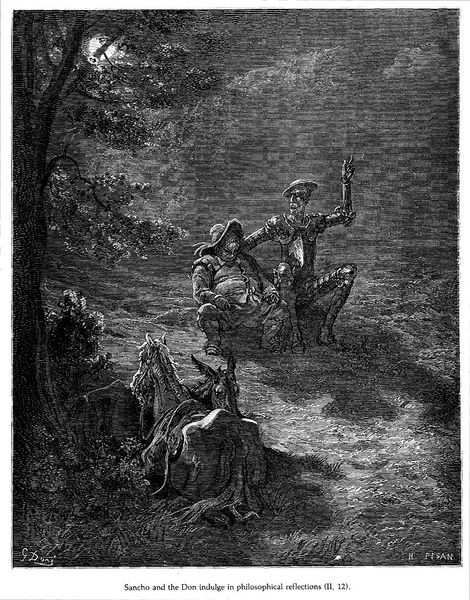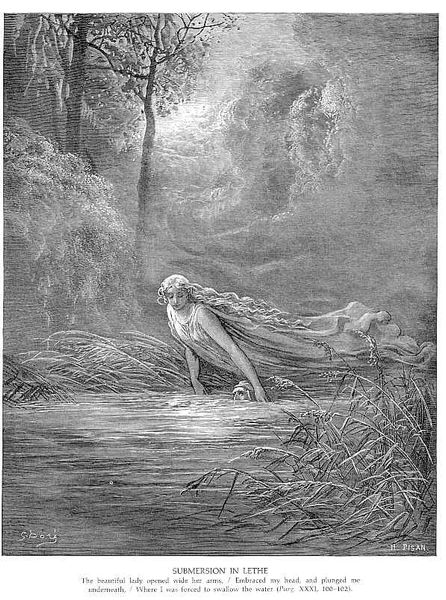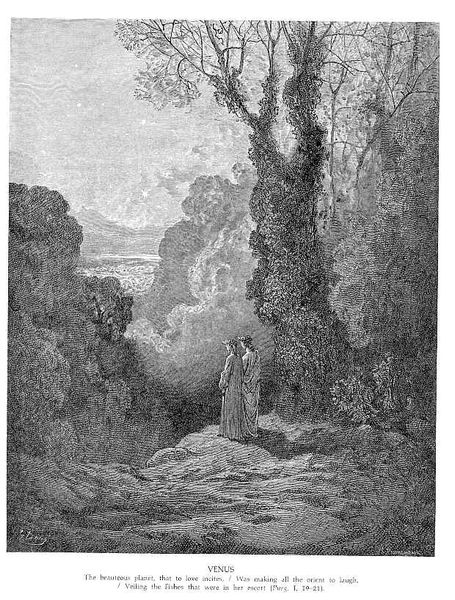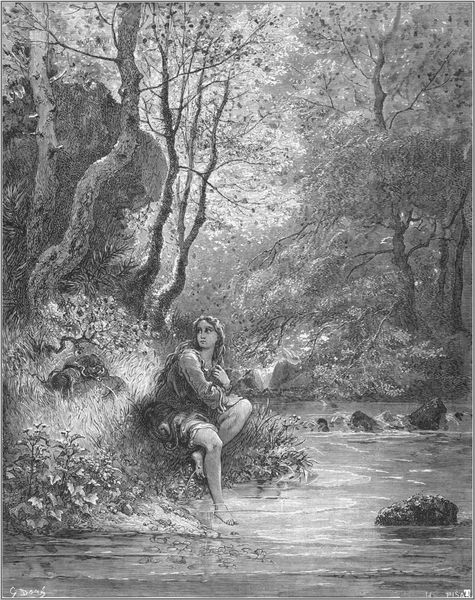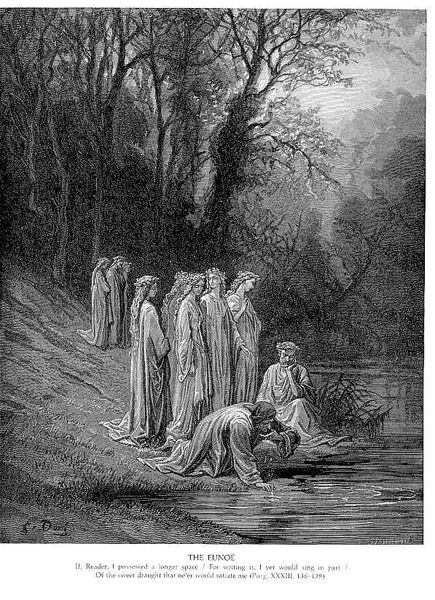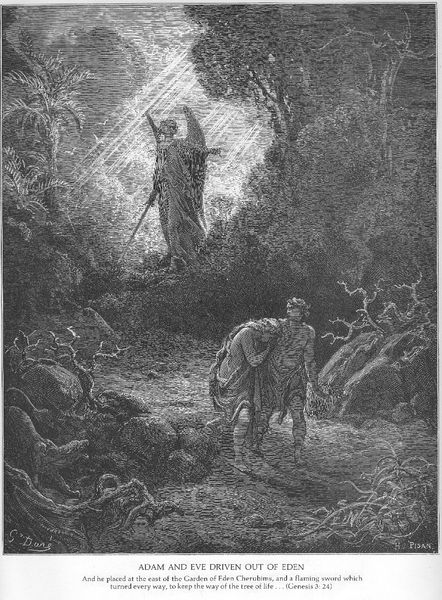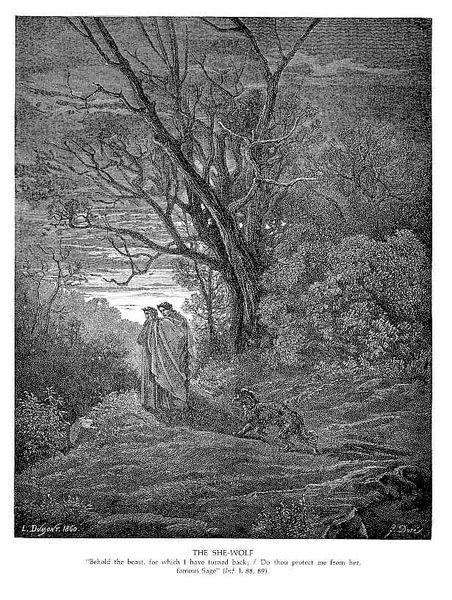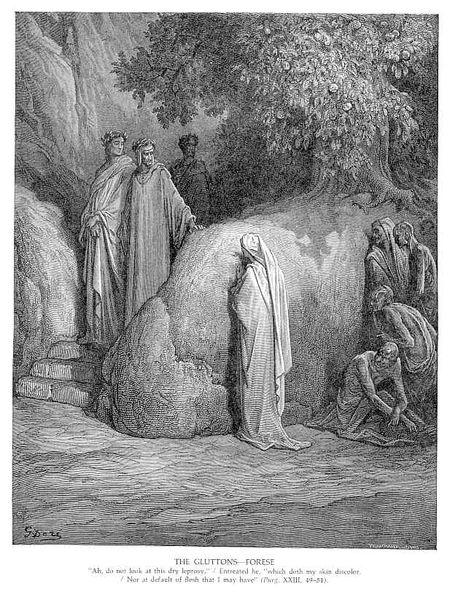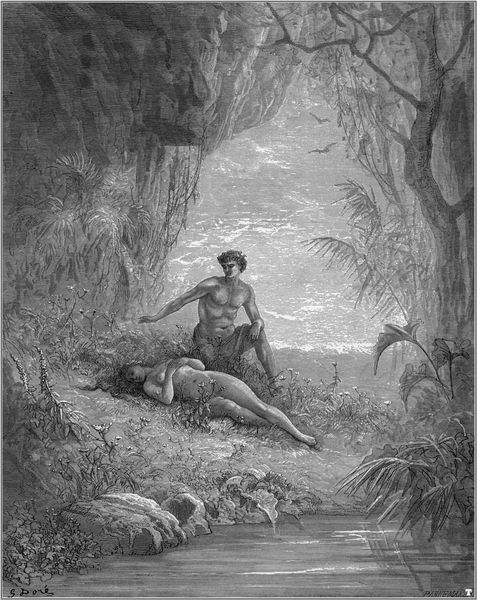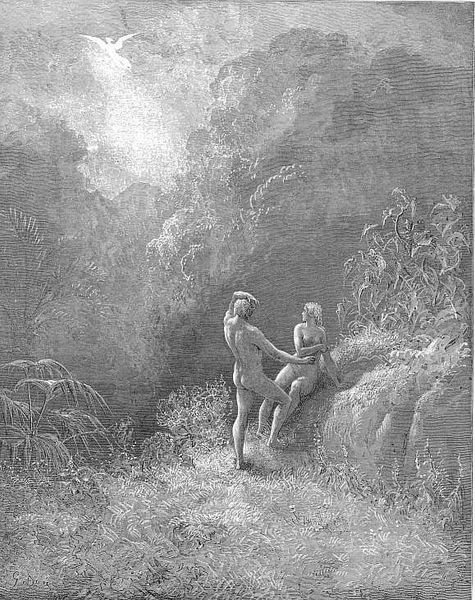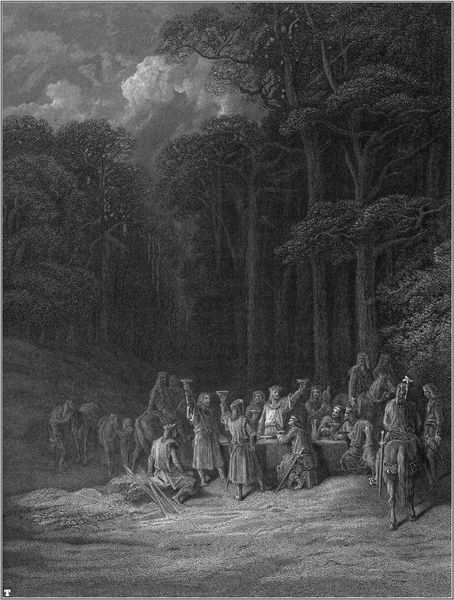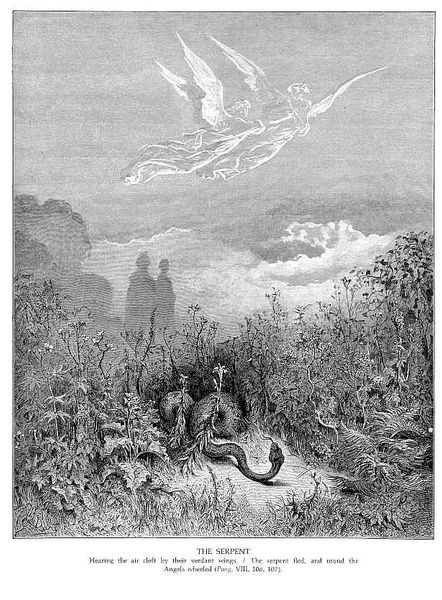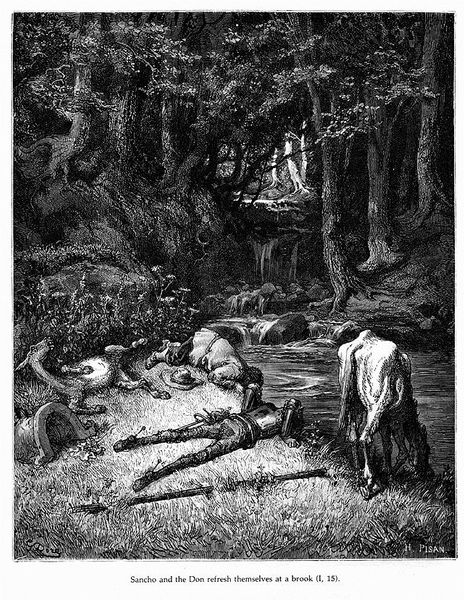
drawing, paper, photography, ink, engraving
#
drawing
#
pencil sketch
#
landscape
#
paper
#
photography
#
ink
#
christianity
#
history-painting
#
engraving
#
christ
Copyright: Public domain
Editor: We are looking at “David and Jonathan” by Gustave Doré, an engraving. It depicts two figures in what looks like a farewell scene in a dense forest. There's a definite somber mood evoked by the strong contrast of light and shadow. How do you read this composition? Curator: Note how the dense, almost claustrophobic forest frames the figures. The light is not merely illustrative but structurally important, isolating David and Jonathan, drawing the viewer's eye to their interaction, specifically, and the reflective surface of the water at their feet. What is suggested by this interplay of darkness and light in relation to the figures' poses? Editor: Well, their faces are cast in shadow, and one appears to be comforting the other, as the figures huddle. I wonder, how would you characterize the lines themselves? Curator: The lines are incredibly precise and detailed, typical of Doré's engraving style. They are not merely descriptive but create texture and depth, contributing to the emotional intensity. The direction of the lines, the varying density, serves to amplify a sense of unease, would you agree? How does the surface of the water reflect the scene as a whole? Editor: The ripples blur the figures' reflections. The image makes one feel very small in such a wild location. It seems the details in the illustration adds tension between the two figures while also revealing vulnerability and emotional exposure in a desolate scene. Curator: Precisely. Through line, light, and composition, Doré achieves an unparalleled degree of emotive expressiveness within a stark visual economy, one defined through visual means only. Editor: I never considered the lines to have such an impact and such purpose. Thanks for walking me through your interpretation.
Comments
No comments
Be the first to comment and join the conversation on the ultimate creative platform.
